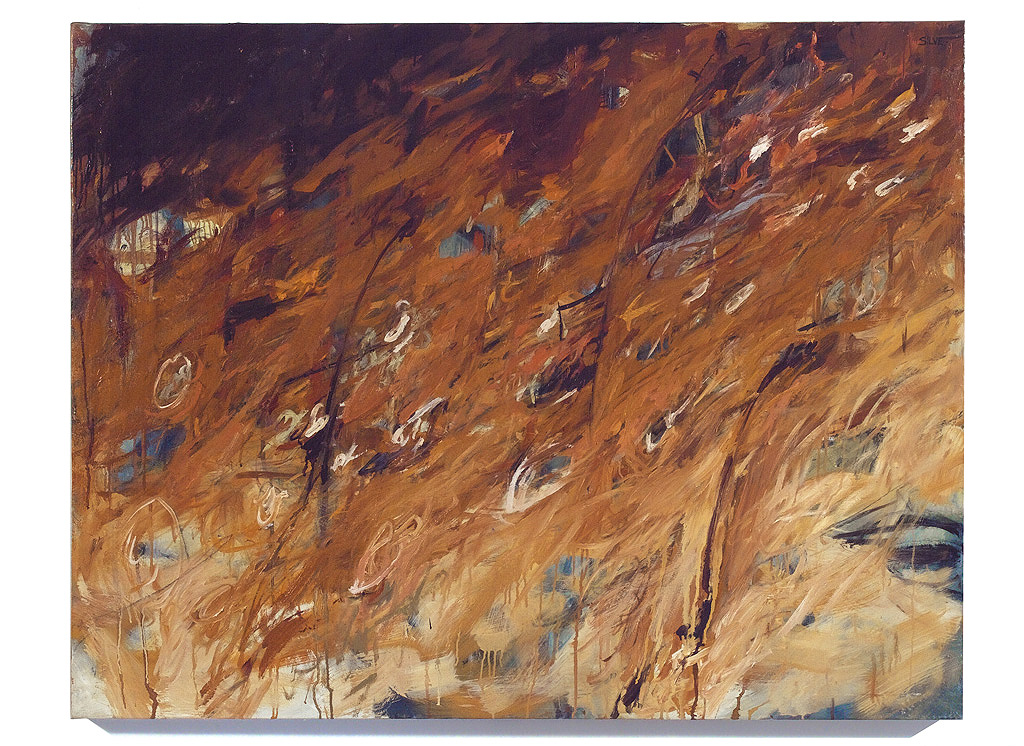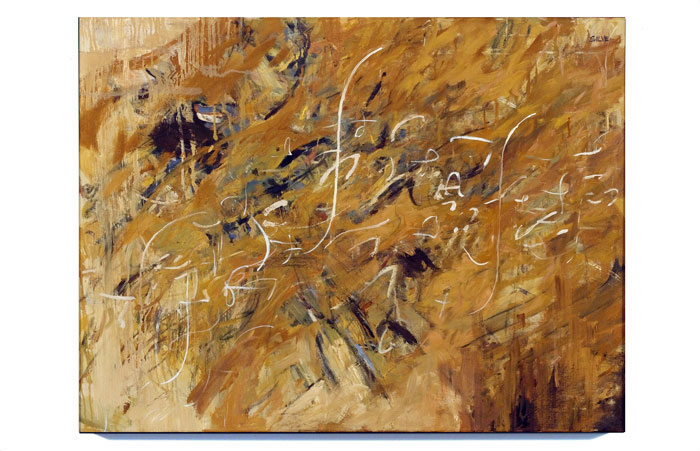Transitions
Transitions is Karen Silve's fifth solo exhibition at Calloway Fine Art, following her enormously successful Beijing Trees series from 2017. It incorporates two bodies of work created between 2018 and 2019 and shows the shift in her compositions.
After facing the dissolution of a lengthy personal relationship, Silve spent three months alone in France where she had to confront her newfound vulnerability and how it related to her work. While struggling to adapt to her new reality, Silve turned her focus towards the mountains just within reach of her apartment but, after months of unsuccessful studio work, she realized that she would need to turn inwards to grapple with the uncertainty that hovered over her life.
The breakthrough came in a form of a self-portrait painted when Silve was in her late 20's. Placed over her desk in her studio, it sparked the desire to produce more, a challenge in its own right but one that led to the sought-after spark and to the series that will be on display in the gallery.
As Silve explains:
Doing self portraits can be very painful. After all, there’s nothing between you and yourself. It’s like going to a therapy session in which you have to be very honest. This powerful process made me realize the mountains were simply a reflection of myself. I was vulnerable, and realized I needed to start the painting from a point of vulnerability. The first thing I did was take a bunch of nude photos of myself. Then I incorporated them into the mountain photos. All of a sudden I started to realize a new direction for this body of work.
I struggled desperately trying to figure out how to get the nude images of me with the French landscape in an honest and expressive way. I still had nothing to show my galleries and couldn’t face going into my studio daily, or even weekly.
One day I opened my email and saw this image of Tracy Emin sitting under one of her paintings: “What are you so fucking afraid of”. Wow! This image changed the way I walked into my studio. I realized fear was stopping me from painting. But what was I so afraid of? I didn’t know. I just knew I felt it.Each day I had to enter my studio with the thought “no fear today”. I used mindful techniques to be present without fear, similarly to an experience in France when I went up in a two-seated airplane. Since I’m claustrophobic, it was a big deal.
I needed privacy, like the way one may write pages in a journal that is never to be seen. I painted with the idea that nobody would see these paintings. This allowed me to be very honest, without fear but very vulnerable.
Almost all of my bodies of works have been based on finding a positive experience and expressing that experience on canvas. They were “gift” like, and I had a lot to give. Not these paintings. My hopper was empty and I had nothing to give. I needed to be given back to. I was surprised once I realized these paintings were giving back to me. I found strength in creating them. Nonetheless, each day was as difficult as it would be to go to a therapist every day, unveiling all of your fears one by one.
The subject changed from the mountains, to the vulnerability of myself in the mountains then, finally, to my strength from my own vulnerability. I found this to be powerful, and true.
I wrote a very personal blog about the process I went through to develop these works. You can read it here. I also wrote a blog about flying in the airplane, in which a few paintings were based on that experience. You can read about it here.
























































